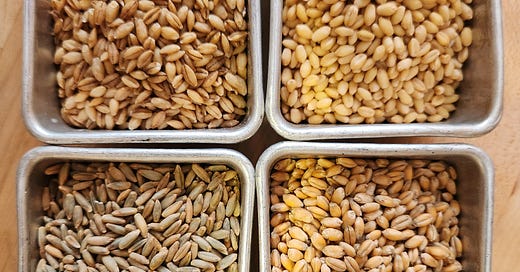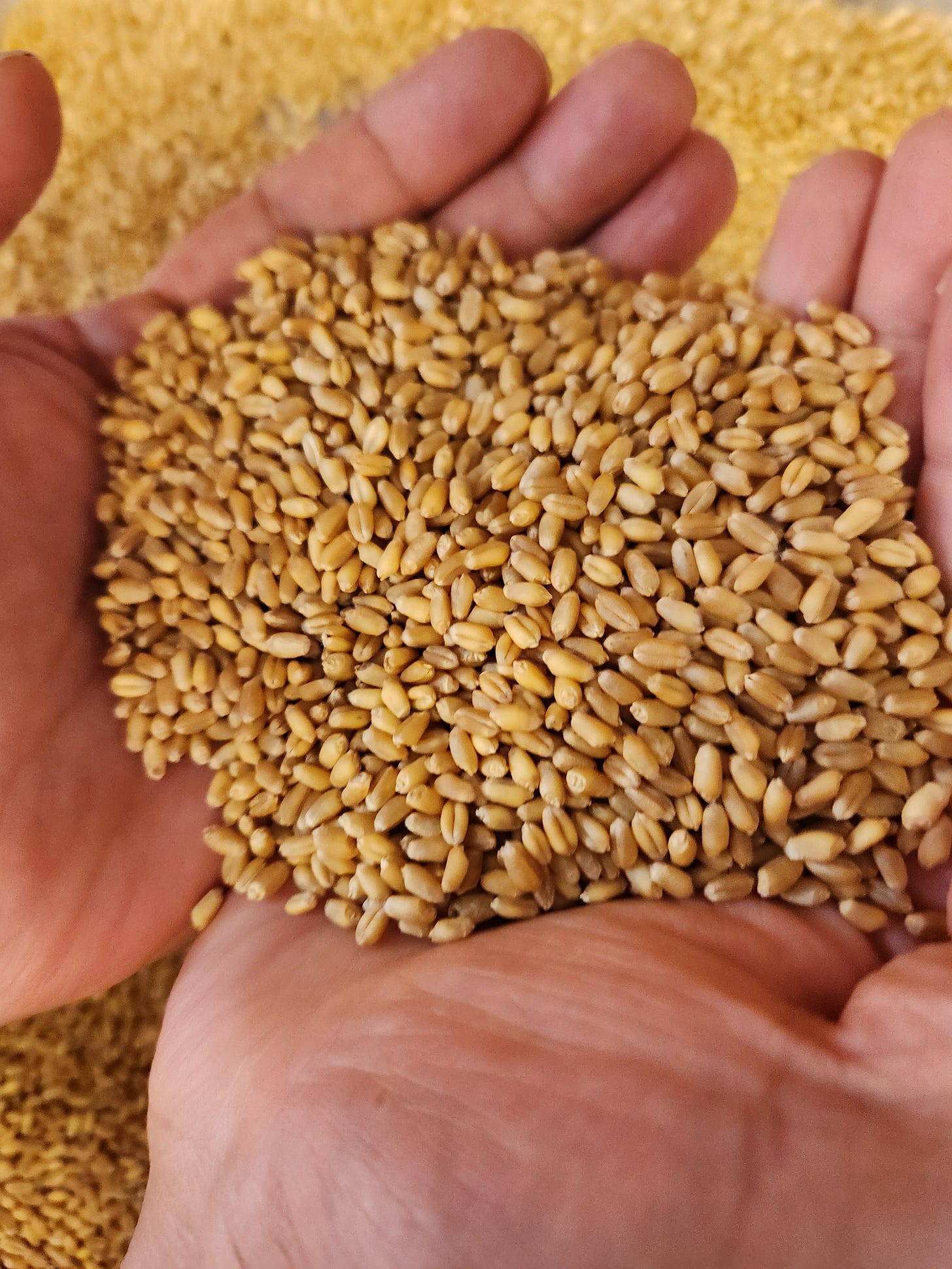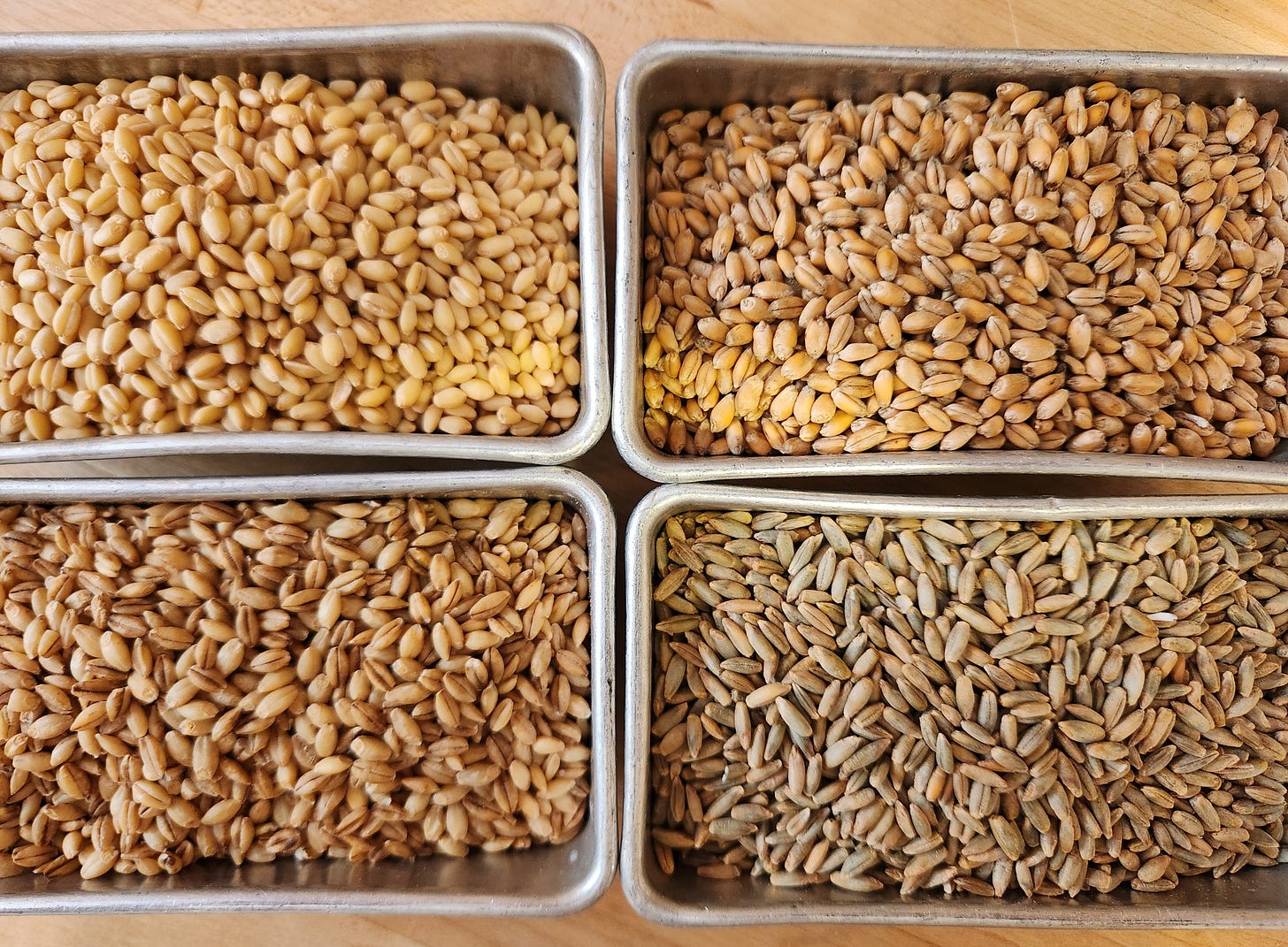What’s with the term, “full-inclusion flour”? If you think that it’s another way of saying whole wheat flour, you’re not alone. And you can be forgiven for thinking it sounds like an invented phrase designed to bring in more money for the same product–whole wheat bread.
But that’s not it at all! “Full-inclusion” is a term that comes from the world of flour milling, and, in a world of misleading marketing, it’s one of the only ways to communicate that flour was made from the entire wheat berry. In short, full-inclusion flour is flour which was never sifted.
Isn’t That Whole Wheat Flour?
In a word: no.
In the world of commercial flour, whole wheat flour is a complete misnomer. Like all flour, it is created by milling wheat berries, usually in giant roller mills. Next, the crushed grains are shifted into the three components of a wheat berry (bran, germ, and endosperm) through a multi-step process. The endosperm, which is the fluffy white stuff, is essentially white flour.
In the final step of the process, a portion of the bran is added back to the white flour to make “whole wheat” flour. By US law, only 50% of the bran needs to be added back in for flour to be called “whole wheat.” Clearly, whole wheat is a bit of a lie.
The Anatomy of a Grain of Wheat
Before we continue, let’s review the parts of a wheat berry–the bran, endosperm, and germ.
The germ is the grain’s nutritional powerhouse. It contains vitamins, minerals, antioxidants, and healthy fats. A wheat berry is a seed, and the germ is the baby plant.
The bran is the wheat berry’s protective outer shell. It is rich in fiber, B vitamins, and healthy fats. The bran’s job is to protect the baby plant inside.
The endosperm makes up the majority of the kernel. It is the starchy food for the baby plant which will sustain it until it starts to grow roots and leaves.
The most commonly used method of milling in commercial bread is called multiple-stream. The bran and germ, together with their nutrients, are separated during the production of processed wheat flour, leaving only the endosperm.
What Does This Mean for Flour?
Ok, back to whole wheat flour. There are two main issues with the way whole wheat flour is produced today. First, since most of the nutritional value of a wheat berry is in the germ and bran, leaving much of that out results in flour that is less nutritious, less filling, and less flavorful.
Second, the process of roller milling white flour first, and then adding a portion of the bran back in, results in a giant batch of commercial, homogenized flour. This is a major missed opportunity. There are so many unique kinds of wheat berries out there, each with different flavors, textures, and colors. But instead of highlighting their diversity, mass produced whole wheat flour favors a commodity monocrop of wheat, and then further strips it of what little personality it had.
The enriched, processed wheat flour that you can buy at the grocery store is supplemented with iron and B vitamins in an attempt to replace some of the elements that were lost during processing. Other elements, such as fiber, vitamin E, antioxidants, and healthy fats, are usually gone forever.
So is Whole Wheat Flour Evil?
Many manufacturers of whole wheat flour, who are of course also in the business of selling it, claim it is essentially the same as full inclusion flour. They argue that since whole wheat flour contains similar proportions to the wheat berries it was created from, with some vitamins added back in, it has the same nutritional value.
However, if you sift through the internet (as I did), it becomes clear that there’s no clear answer.
Tufts Food Lab writes about the industrial production of wheat that:
“because particles from different parts of the grain separate during the process, they can be manipulated separately and joined back together in varying proportions to achieve a specified end product.”
To add to the confusion, they write:
“Some producers have capitalized on this marketing opportunity by first processing with stone milling and then finishing with roller milling.”
The Indonesian flour milling company Shriboga says about their separating process:
“It also allows for the extraction of valuable by-products, such as wheat germ oil, which has nutritional and industrial applications.”
The Institute of Culinary Education writes that:
“Because the milled bran and wheat germ particles are too large for most bakers to use, they’ll run these through the mill again to break them down into smaller particles perhaps further reducing the nutritional value of the flour. This means you may be buying whole wheat flour but not necessarily whole grain.”
So… Is It Evil?
The answer is: not necessarily. There are good flour companies out there that make high-quality whole wheat flours and use responsible sourcing and milling methods. And of course, any whole wheat flour is going to be more nutritious than its white flour counterpart.
But with full-inclusion flour, you will never have to guess if you are getting the entire grain. The flour goes in the mill on end and comes out ready to be used for baking on the other.
In other words, you get the full benefits of flour. You get all the vitamins, minerals, fiber, and healthy fats, of course. But what’s even more interesting (and fun!) is the flavors! Full-inclusion flours are all unique and special, and once you discover how they can add a subtle complexity to snacking cakes or a flavorful punch to shortbread cookies, you’ll never go back. We certainly haven’t!
The Recipe
So, let’s get started baking. In this week’s recipe, we’ll be playing around with an American classic: chocolate chip cookies. This simple recipe is a perfect, fail-proof first step to playing around with full-inclusion flour. And, if you haven’t gotten your hands on some full-inclusion flour yet, (we’ll be covering how to shop for and/or mill full-inclusion flour in the next few weeks), this recipe will work with any high-quality flour you have on hand. This is just one of the many recipes we’ve developed at Atla’s Conchas, and we’re excited to bake it with you!





